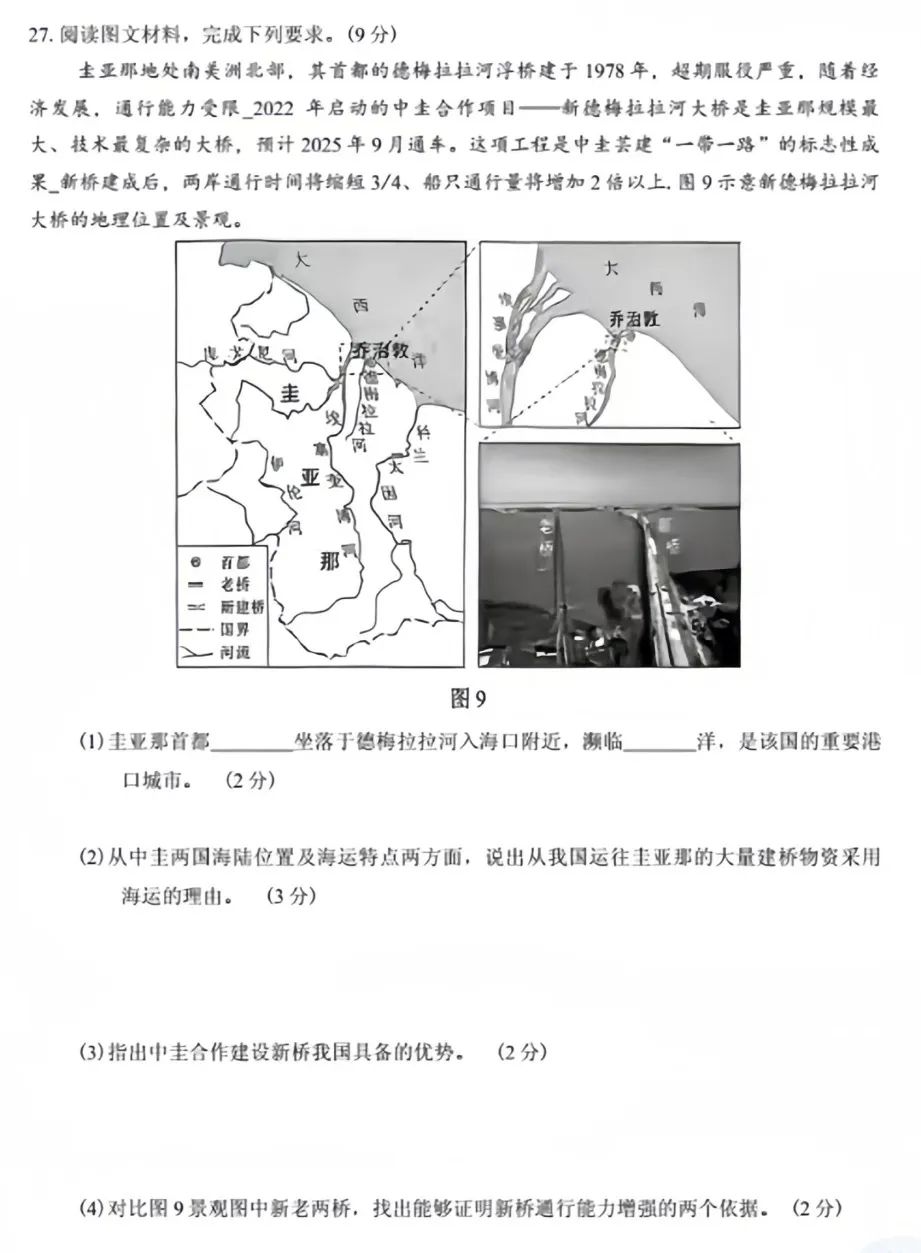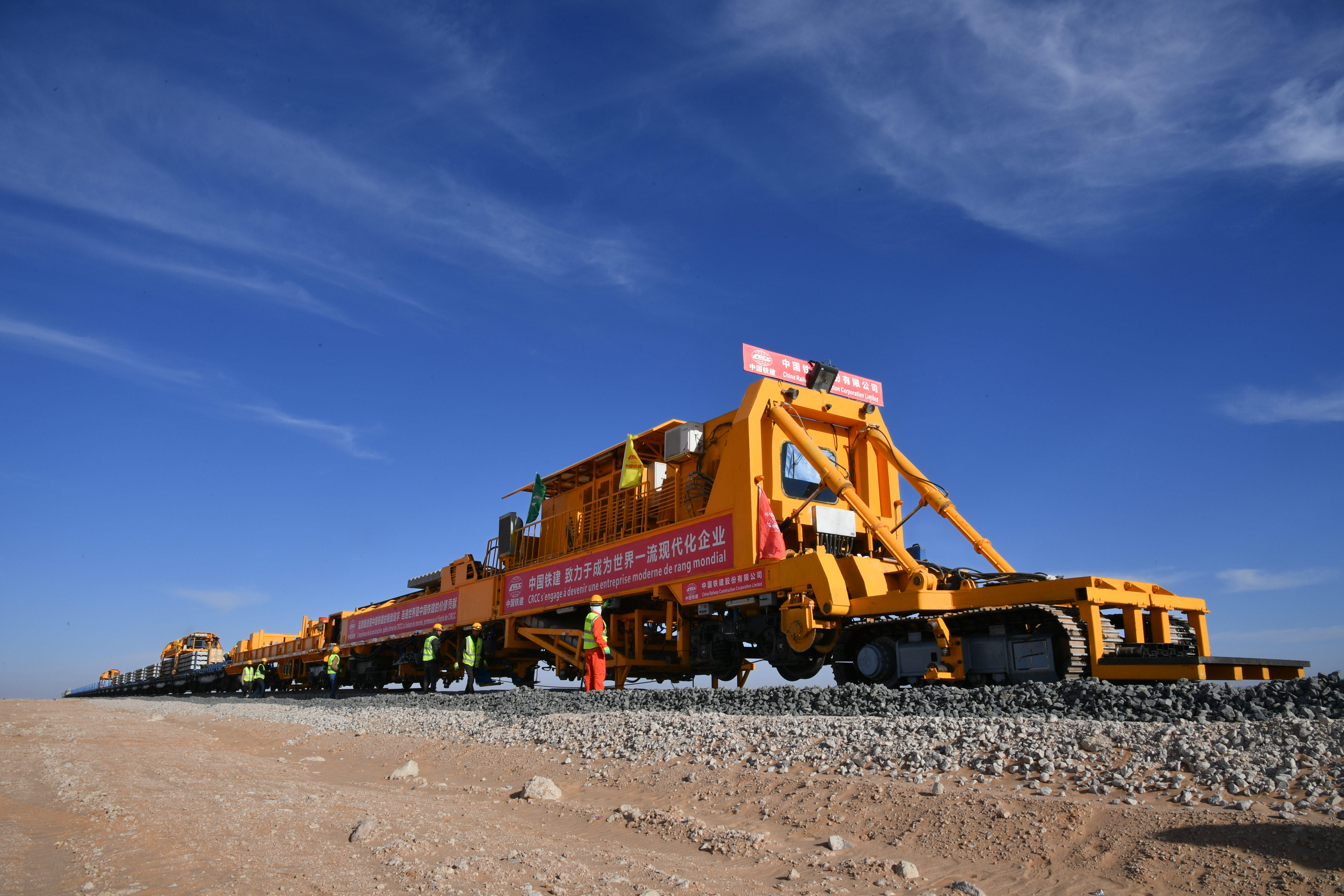- 戴和根分别与阿尔及利亚公共工程与基础设施部部长、国务部长举行会谈2025-07-09
- 戴和根出席阿尔及利亚西部铁路矿业线优先段铺通仪式2025-07-09
- 戴和根与中国驻阿尔及利亚大使董广利举行会谈2025-07-08
- 阿尔及利亚公共工程部长一行考察西部铁路矿业线项目2025-07-04
- 新德梅拉拉河大桥项目登上中考试题:中国方案如何铸就圭亚那百年交通咽喉2025-07-03
- 铁建国际举行“提质增效·典型引领”先进事迹报告会2025-07-01
- 人民日报:外籍员工,在共建“一带一路”中成长2025-06-27
- 安全生产月,我们在行动2025-06-24
- 人民日报:共护绿水青山 共建美丽家园(央企走出去·绿色发展)2025-06-24
- 李重阳会见香港机场管理局署理工程总监陈浩荣一行2025-06-21
- 戴和根分别与阿尔及利亚公共工程与基础设施部部长、国务部长举行会谈2025-07-09
- 戴和根出席阿尔及利亚西部铁路矿业线优先段铺通仪式2025-07-08
- 戴和根与中国驻阿尔及利亚大使董广利举行会谈2025-07-08
- 戴和根在阿联酋开展系列商务活动2025-07-07
- 戴和根与阿联酋能源与基础设施部部长苏海尔·穆罕默德·马兹鲁伊举行会谈2025-07-07
- 戴和根与蒙古国交通运输部部长博·德勒格日赛汗举行会谈2025-07-04
- 戴和根与北京市大兴区主要领导举行会谈2025-07-02
- 戴和根与中国绿色发展基金执行主席桂振华举行会谈2025-07-01
- 中国铁建连续4年获评中央单位定点帮扶工作成效考核最高等次评价2025-06-26
- 戴和根与越南总理范明政举行会谈2025-06-26
- 国务院国资委党委专题学习习近平总书记重要讲话重要指示批示精神强化政治担当抓实作风建设 更好服务党和国家工作大局2025-07-14
- 国务院国资委党委举办深入贯彻中央八项规定精神学习教育读书班暨国资央企警示教育会 深化以案为戒以案促改 以作风建设新成效更好保障国资央企高质量发展2025-06-03
- 《人民日报》刊发国务院国资委党委署名文章:为高水平科技自立自强贡献国资央企力量2025-06-19
- 国务院国资委党委召开国资央企集中整治违规吃喝推进会 以案为鉴以案促治纠治并举 以作风建设新成效更好保障国资央企高质量发展2025-06-13
- 国务院国资委党委专题深入学习习近平总书记关于加强党的作风建设的重要论述 严字当头部署国资央企集中整治违规吃喝 持之以恒筑牢中央八项规定堤坝2025-06-10
- 国务院国资委全面深化改革领导小组召开2025年第一次全体会议 确保高质量完成国企改革深化提升行动 研究进一步深化国资国企改革方案2025-05-19
- 国务院国资委党委传达学习习近平总书记近期重要讲话精神 立足新起点新形势科学谋划国资央企“十五五”规划2025-05-13
- 国务院国资委党委传达学习习近平总书记近期重要讲话重要指示精神 研究部署贯彻落实举措 更好服务党和国家工作大局2025-05-12
- 国务院国资委党委举办深入贯彻中央八项规定精神学习教育读书班2025-05-06
- 国务院国资委举办“国资大讲堂” 张玉卓会见主讲人林毅夫2025-04-27
- 走出一条中国特色城市发展道路——以习近平同志为核心的党中央引领城市工作纪实2025-07-14
- 习近平总书记在山西考察纪实:“咬定青山不放松,坚定有序向前推进”2025-07-10
- 习近平在山西考察时强调:努力在推动资源型经济转型发展上迈出新步伐 奋力谱写三晋大地推进中国式现代化新篇章2025-07-09
- 习近平在山西阳泉市向抗战烈士敬献花篮并参观百团大战纪念馆2025-07-08
- 《习近平生态文明文选》第一卷出版发行2025-07-07
- 从厦门之兴看中国之治——习近平同志领导编制《1985年—2000年厦门经济社会发展战略》启示录2025-07-04
- 习近平致信祝贺全国青联十四届全委会全国学联二十八大召开强调:坚定正确政治方向深化改革创新 在党的旗帜下奋进新征程创造新业绩2025-07-03
- 习近平主持召开中央财经委员会第六次会议强调:纵深推进全国统一大市场建设 推动海洋经济高质量发展2025-07-01
- 习近平在中共中央政治局第二十一次集体学习时强调坚持从抓作风入手推进全面从严治党把新时代党的自我革命要求进一步落实到位2025-07-01
- 中共中央政治局召开会议审议《党中央决策议事协调机构工作条例》中共中央总书记习近平主持会议2025-06-30






















